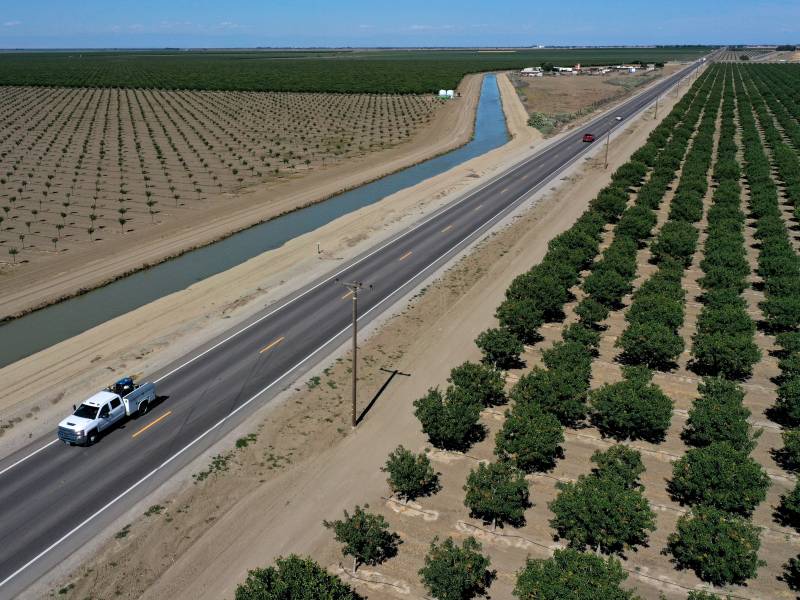Gallegos is in no doubt about what a megastorm would mean for Firebaugh.
"A lot of water. Flooding for many days. [A] potential hazard to really wiping out the city," he told NPR's Leila Fadel.
Climate scientists at the University of California, Los Angeles say that climate change will increase the frequency of these megastorms.
While they used to occur every 100-200 years on average, rising temperatures mean we'll now see them as often as every 50 years.
Xingying Huang and Daniel Swain, who co-authored the research, say a megastorm could mean millions of people displaced by flooding, major transportation links severed, and damage totaling nearly $1 trillion.
Gallegos is worried that bigger cities will be the focus of flood-prevention spending before a megastorm, rather than his city of around 8,500 people.
"You think about San Francisco, Los Angeles. Is the state really going to say — or the feds — let me give Firebaugh $50 to $60 million to upgrade the levee, or should we give it to somebody else?" he said. "They say, 'Oh if we lose that town, what impact is it going to have to the state?' Well, it's going to have a lot of impact to the state."
Firebaugh is an agricultural community, growing tomatoes that are processed into sauces for the restaurant industry. Farmers also grow cantaloupes. Gallegos says the loss of those businesses would have a knock-on impact on California's economy.
Residents of Firebaugh are worried by the prospect of a megastorm hitting, especially after a previous evacuation due to a flood in 1997 didn't go well.
"The city wasn't prepared at that time for an evacuation. They evacuated all the residents to our community center. But the community center was right next to the river, so there was a levee that was washing out," Gallegos said. "So they went and sent them out to our neighboring cities. But those cities were not ready for our residents, so then they had to get them back. And then they put them up in a warehouse just west of the city."
Gallegos knows that state and federal officials have a choice: Pay for flood prevention measures now, or pay much, much more later to help Firebaugh recover from a megastorm.
"We need help. I always tell our leaders, we can fix it now, which would cost less than when we have an emergency, and you have people trying to fix it, which would cost a lot more than being proactive," he said.
If nothing is done, the alternative doesn't bear thinking about for Gallegos, he said.
"I think Firebaugh would be wiped out."
The audio for this story was produced by Chad Campbell and edited by Simone Popperl and Adam Bearne.
Copyright 2022 NPR. To see more, visit https://www.npr.org.
9(MDAxOTAwOTE4MDEyMTkxMDAzNjczZDljZA004))

9(MDAxOTAwOTE4MDEyMTkxMDAzNjczZDljZA004))